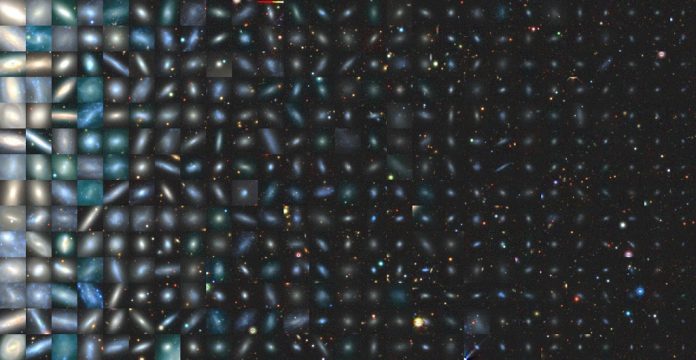
Is the Milky Way galaxy, our cosmic home, truly unique?
A group of scientists set out to explore this question over a decade ago.
In 2013, they launched the Satellites Around Galactic Analogs (SAGA) Survey, aiming to study galaxy systems similar to the Milky Way.
Now, after years of research, the SAGA Survey team has published three new studies on the arXiv preprint server, offering fresh insights into how special the Milky Way might be.
Satellite galaxies are smaller galaxies that orbit a larger “host” galaxy, much like how the Moon orbits the Earth.
These satellites are held in place by the host galaxy’s gravitational pull and the surrounding dark matter.
The Milky Way, for instance, has several satellite galaxies, with the Large and Small Magellanic Clouds (LMC and SMC) being the largest and most well-known.
While the LMC and SMC can be seen with the naked eye from the Southern Hemisphere, many other smaller satellites are faint and can only be observed with powerful telescopes.
The SAGA Survey focuses on finding and studying these satellite galaxies around other host galaxies that are similar in size and mass to the Milky Way.
By comparing these systems to our own, scientists hope to learn more about the Milky Way’s uniqueness.
Is the Milky Way an outlier?
In the first study led by Yao-Yuan Mao from the University of Utah, the researchers identified 378 satellite galaxies orbiting 101 Milky Way-like systems.
They found that the number of satellites varied widely, ranging from none to 13 per system, while the Milky Way has four confirmed satellite galaxies.
Interestingly, the Milky Way appears to host fewer satellites than other systems with a massive companion like the LMC. The SAGA Survey suggests that systems with large satellites like the LMC tend to have more satellites overall, making the Milky Way somewhat of an outlier.
One possible explanation for this difference is that the Milky Way acquired the LMC and SMC relatively recently in cosmic terms. If the Milky Way is slightly less massive and only recently added these two large satellites, it might explain why it has fewer other satellites compared to similar galaxies. This finding highlights the importance of understanding the interactions between host galaxies and their satellites to accurately interpret our observations of the Milky Way.
Why do some galaxies stop forming stars?
The second study, led by Marla Geha from Yale University, delves into star formation in satellite galaxies. The researchers wanted to understand what causes some satellite galaxies to stop forming stars, a process known as “quenching.”
They found that satellite galaxies closer to their host galaxy are more likely to have their star formation quenched. This suggests that the environment around the host galaxy plays a significant role in the life cycle of these smaller galaxies.
The third study, led by Yunchong (Richie) Wang, who earned his doctorate with co-author Risa Wechsler at Stanford University, uses the SAGA Survey data to refine existing models of galaxy formation.
The findings indicate that quenched (inactive) galaxies should also exist in more isolated areas, a prediction that future surveys, like the Dark Energy Spectroscopic Instrument Survey, could test.
Beyond these exciting discoveries, the SAGA Survey team has provided a valuable resource to the astronomy community.
They have published new distance measurements, known as redshifts, for about 46,000 galaxies. Determining these redshifts was a challenging task, as the team had to measure hundreds of galaxies to find just one satellite.
These new redshift data will allow astronomers to study a wide range of topics beyond just satellite galaxies.
In summary, the SAGA Survey’s findings not only enhance our understanding of the Milky Way’s place in the universe but also provide valuable data that will benefit future astronomical research.
The Milky Way may indeed be special, but its uniqueness comes with complexities that continue to intrigue scientists.
Source: University of Utah.



